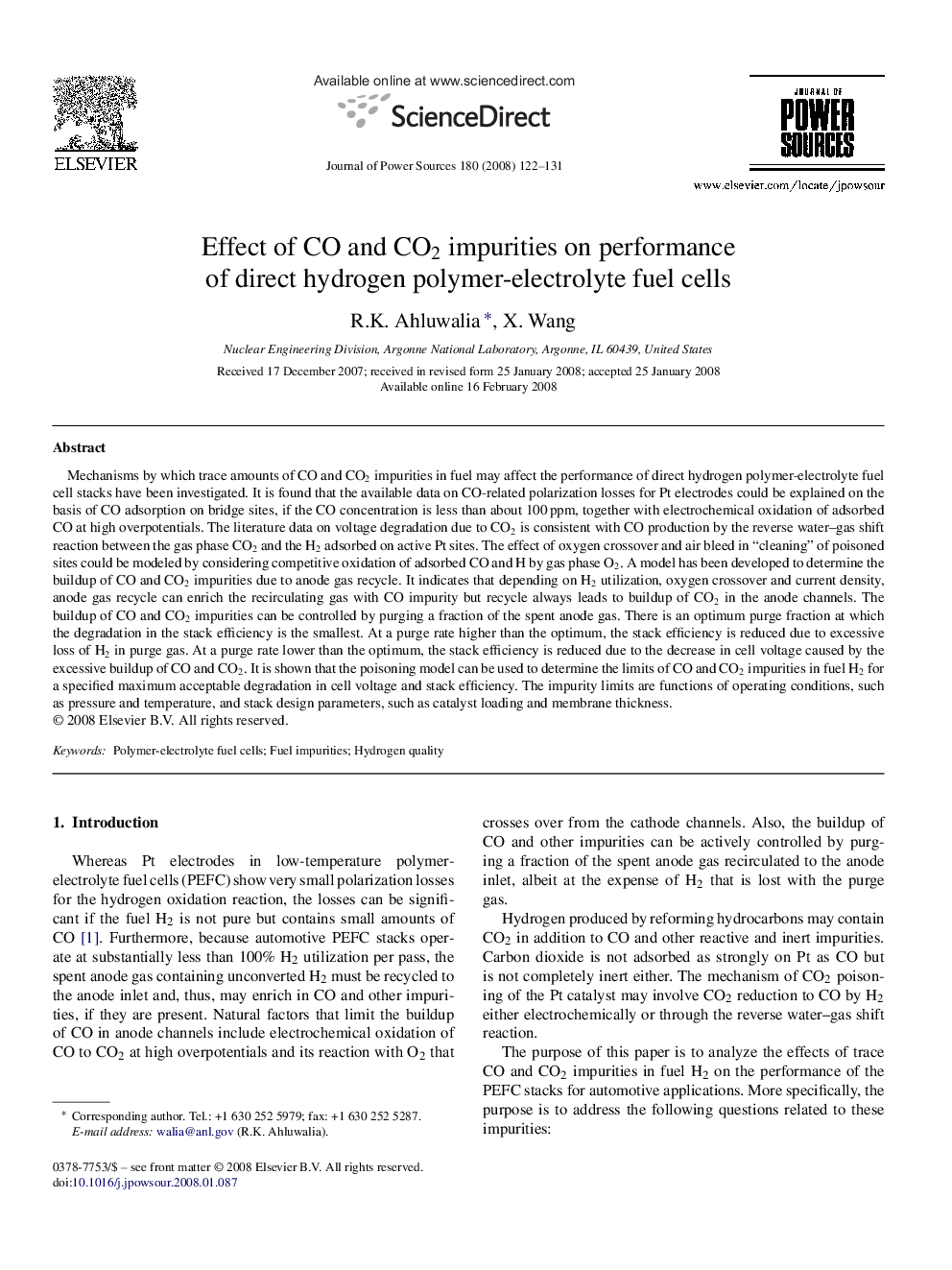| Article ID | Journal | Published Year | Pages | File Type |
|---|---|---|---|---|
| 1290551 | Journal of Power Sources | 2008 | 10 Pages |
Mechanisms by which trace amounts of CO and CO2 impurities in fuel may affect the performance of direct hydrogen polymer-electrolyte fuel cell stacks have been investigated. It is found that the available data on CO-related polarization losses for Pt electrodes could be explained on the basis of CO adsorption on bridge sites, if the CO concentration is less than about 100 ppm, together with electrochemical oxidation of adsorbed CO at high overpotentials. The literature data on voltage degradation due to CO2 is consistent with CO production by the reverse water–gas shift reaction between the gas phase CO2 and the H2 adsorbed on active Pt sites. The effect of oxygen crossover and air bleed in “cleaning” of poisoned sites could be modeled by considering competitive oxidation of adsorbed CO and H by gas phase O2. A model has been developed to determine the buildup of CO and CO2 impurities due to anode gas recycle. It indicates that depending on H2 utilization, oxygen crossover and current density, anode gas recycle can enrich the recirculating gas with CO impurity but recycle always leads to buildup of CO2 in the anode channels. The buildup of CO and CO2 impurities can be controlled by purging a fraction of the spent anode gas. There is an optimum purge fraction at which the degradation in the stack efficiency is the smallest. At a purge rate higher than the optimum, the stack efficiency is reduced due to excessive loss of H2 in purge gas. At a purge rate lower than the optimum, the stack efficiency is reduced due to the decrease in cell voltage caused by the excessive buildup of CO and CO2. It is shown that the poisoning model can be used to determine the limits of CO and CO2 impurities in fuel H2 for a specified maximum acceptable degradation in cell voltage and stack efficiency. The impurity limits are functions of operating conditions, such as pressure and temperature, and stack design parameters, such as catalyst loading and membrane thickness.
